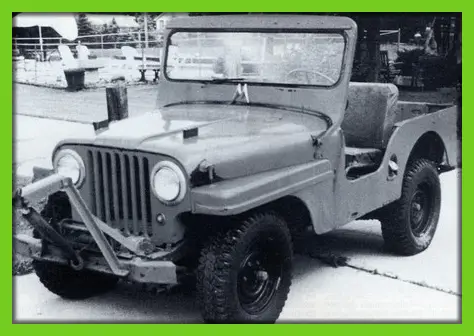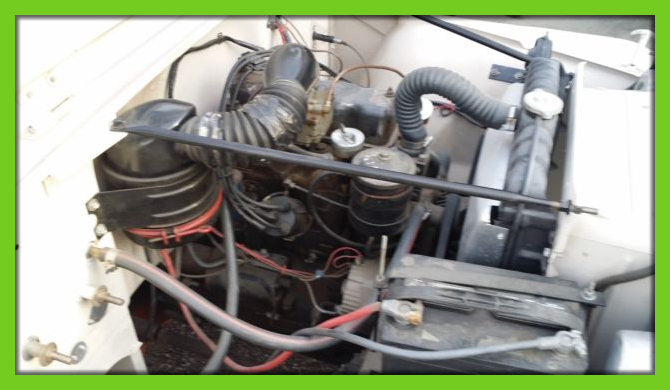Share:
Explore More Topics
The Missing Jeep

Rediscovering the Jeep CJ-4:
A Prototype with Legacy and Innovation
The Jeep CJ-4, the missing Jeep, occupies a unique place in Jeep history. This model was produced as a single prototype in 1951 Willys-Overland. The story of the CJ-4 is not just about a vehicle, but about the evolution of automotive technology and the intersection of civilian desires and military needs during a critical time in history.
The Drive for More Power: Introduction of the Hurricane Engine

Post World War II, the consumer market began to clamor for vehicles with more power and versatility. The Jeep CJ-3, with its 2.2-litre Go-Devil engine, was starting to show its limitations. This engine, which had been a cornerstone of Willys’ success with its 60hp output, was based on a design dating back to 1926. In response to growing demands, Willys unveiled the F-head F-134 in 1950, also known as the Hurricane engine. This newer engine retained the foundational design of the Go-Devil. However, it incorporated an inlet-over-exhaust configuration that allowed for larger valves and increased the power output to 75hp. The Hurricane’s increased size presented a new challenge—it did not fit under the existing CJ models’ hoods.
Unveiling the Jeep CJ
Design Innovations in the CJ-4
To accommodate the taller Hurricane engine, Willys explored several design modifications. Modifications like a sloping hood and a curvier, higher cowl. The CJ-4 prototype showcased these adaptations with a higher bonnet and a raised center section that tapered at the leading edge. These innovations would influence future Jeep designs.
The CJ-4 also featured a military variant, the CJ-4M. It’s purpose was explicitly aimed at dual utility for both civilian and military use, underscored by its designation: Civilian Jeep for the Military. The CJ-4M included military-specific features like blackout lights, gas can mounts, and a snorkel for enhanced off-road capability. The design continuity from the CJ-3A was evident, although the CJ-4M introduced new rounded front fenders and a consistent body width that didn’t narrow at the midpoint.
The End of the Road for CJ-4
While the CJ-4M addressed military needs, Willys simultaneously worked on a purely civilian version and further military adaptations like the long wheelbase CJ-4MA. This later evolved into the M170. However, by mid-1952, as production of the M38A1 ramped up amidst the Korean War, material constraints and design rights issues with the army put a damper on plans to develop a civilian version of the CJ-4. The company resorted to adapting the CJ-3A into the CJ-3B by raising the cowl and bonnet to fit the Hurricane engine, marking an expedient but effective solution to leverage the new engine’s benefits.
The Missing Jeep
The CJ-4, the missing Jeep, might have been the end of the line for that particular model, but its influence lingered in subsequent Jeep designs. Interestingly, the prototype wasn’t dismantled or forgotten. Willys’ Chief Chassis Engineer, Miguel Ordorica, managed to save one, using it for over a decade in Toledo, Ohio, for various heavy-duty tasks. After changing hands post-Ordorica’s death, the CJ-4 went into obscurity, only to resurface in the late ’90s with hopes of restoration.
